A retreat into a garden is a balm for living in unsettling times. The sound of birds’ wings softly fluttering as they fly overhead, the sight of butterflies landing delicately on a leaf to warm their wings in the sun, the curvilinear flow of ornamental grasses as the wind passes between them, work together to create an oasis of tranquility.
Lace-like umbellifers and the near translucent petals of papaver rhoeas, with a texture reminiscent of lightly crumpled tissue paper, are wildflowers that bring an abundance of joy and wonderful memories of home. Wildflowers here are not held in such high esteem, nevertheless this post is dedicated to some lovely specimens that have sprung up unexpectedly, here and there, in pots around the garden or in the ground, courtesy of the birds.
Flowers yet to be identified…
These flowers may be tiny, but they are still beautiful.
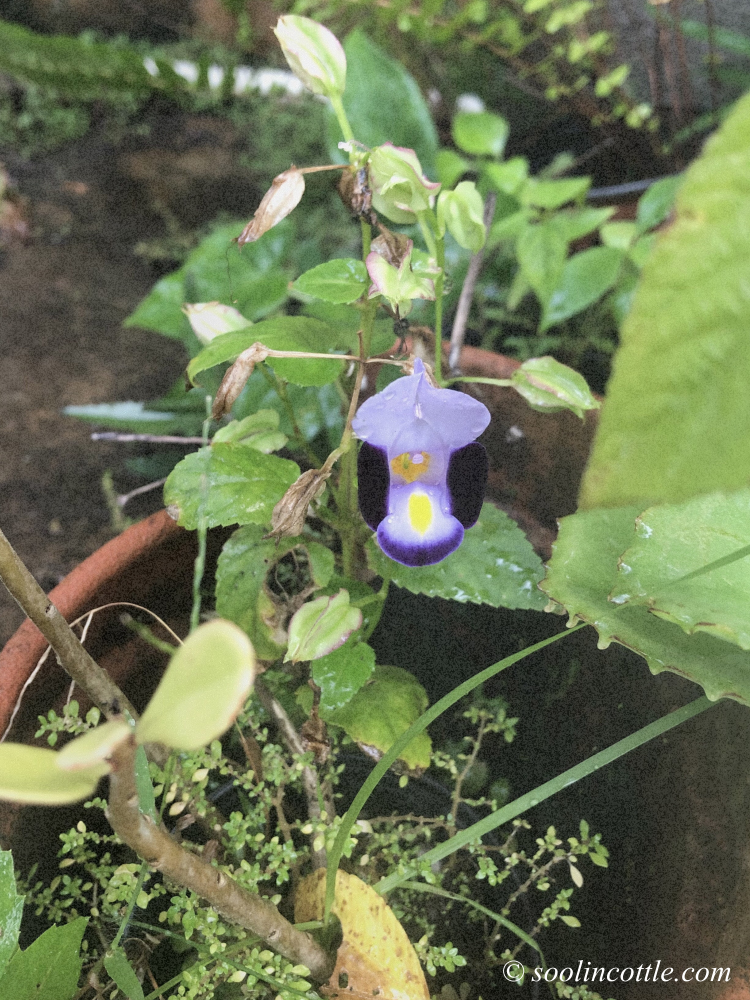
Could this be a cross between a viola odorata and a mini orchid?
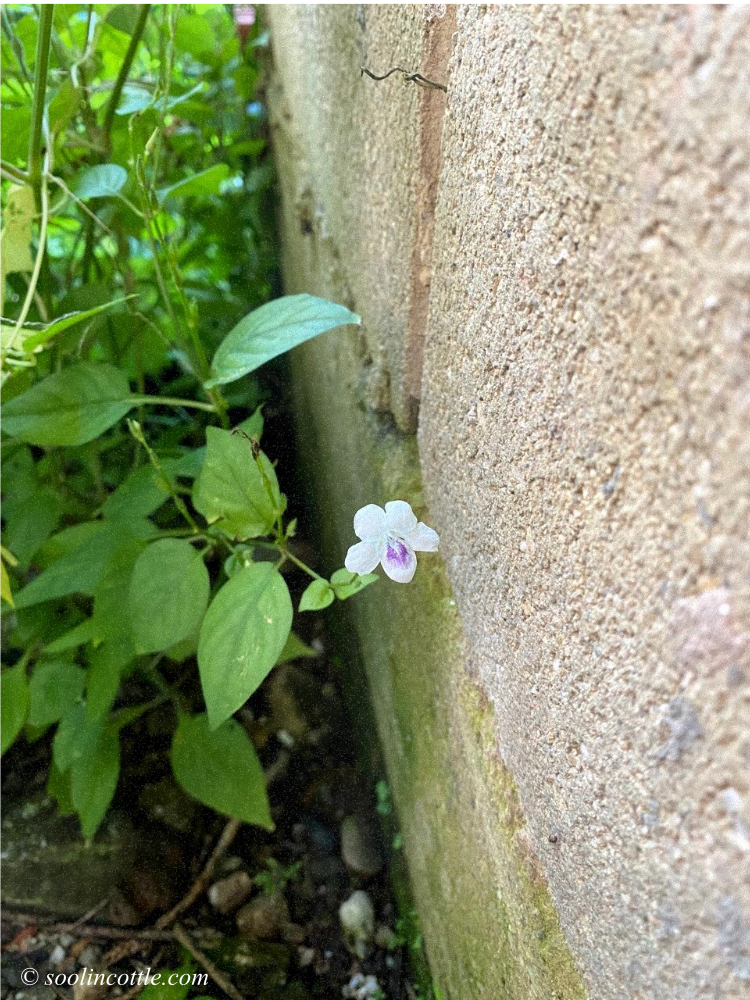
Perhaps this pretty flower is also a relative of an orchid.
This flower looked like a tiny piece of crumpled tissue paper. It didn’t open up more than this.
Edited 12/01/25
This might be the remnant of a five petal flower (see the photo below).
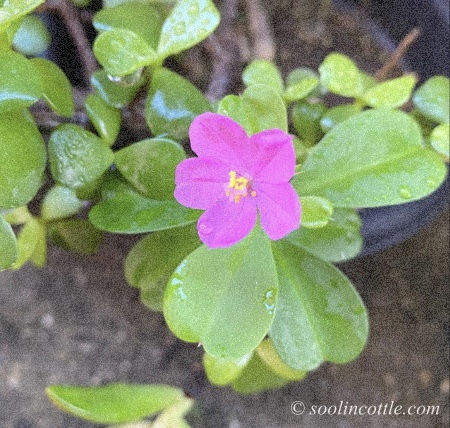
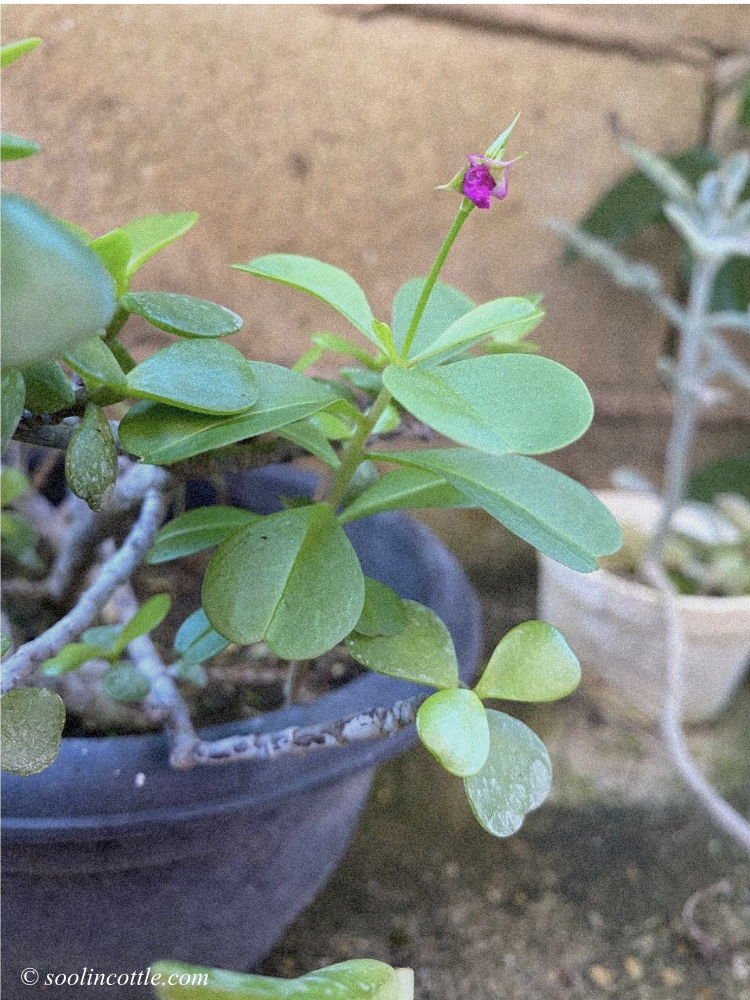
A little star wrapped in a cone of leaves.
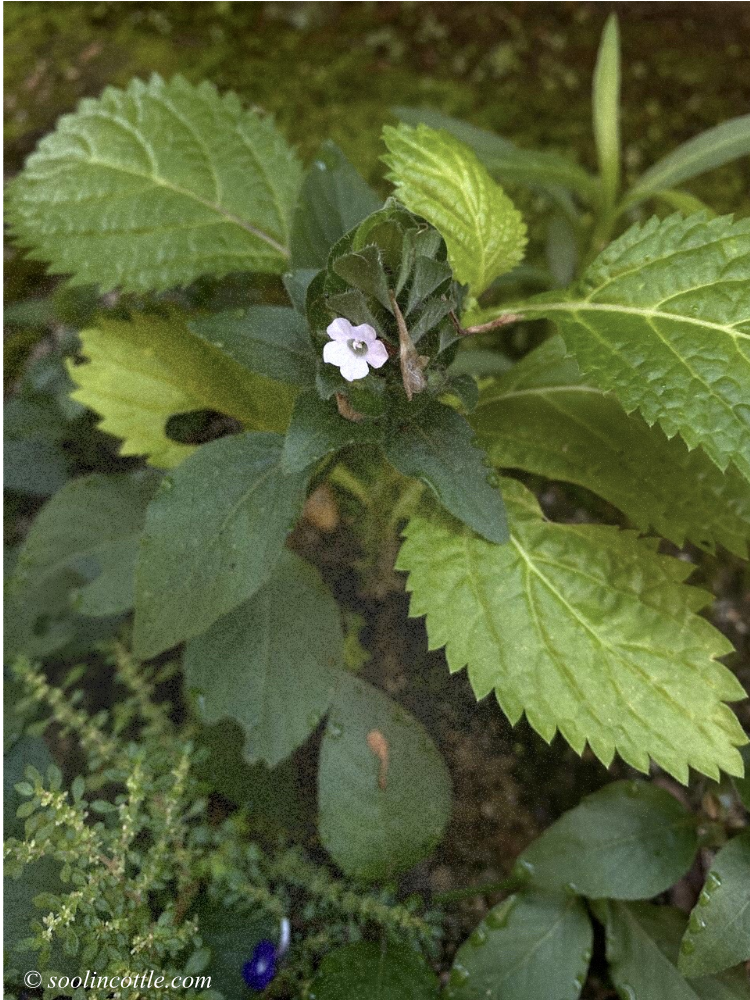
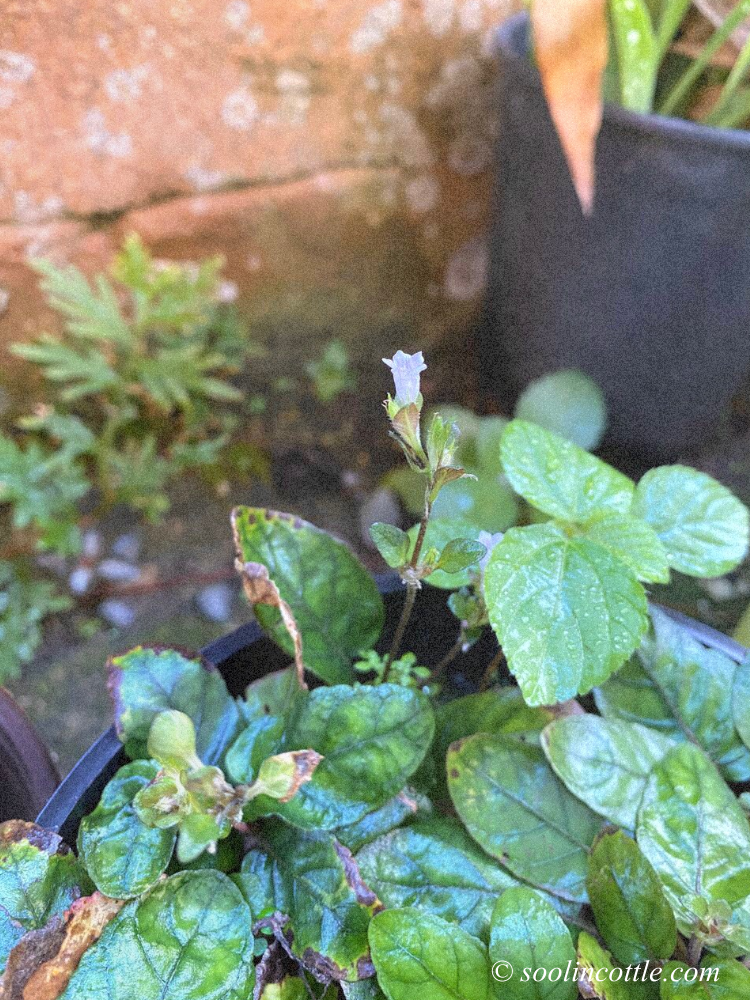
A tiny trumpet.
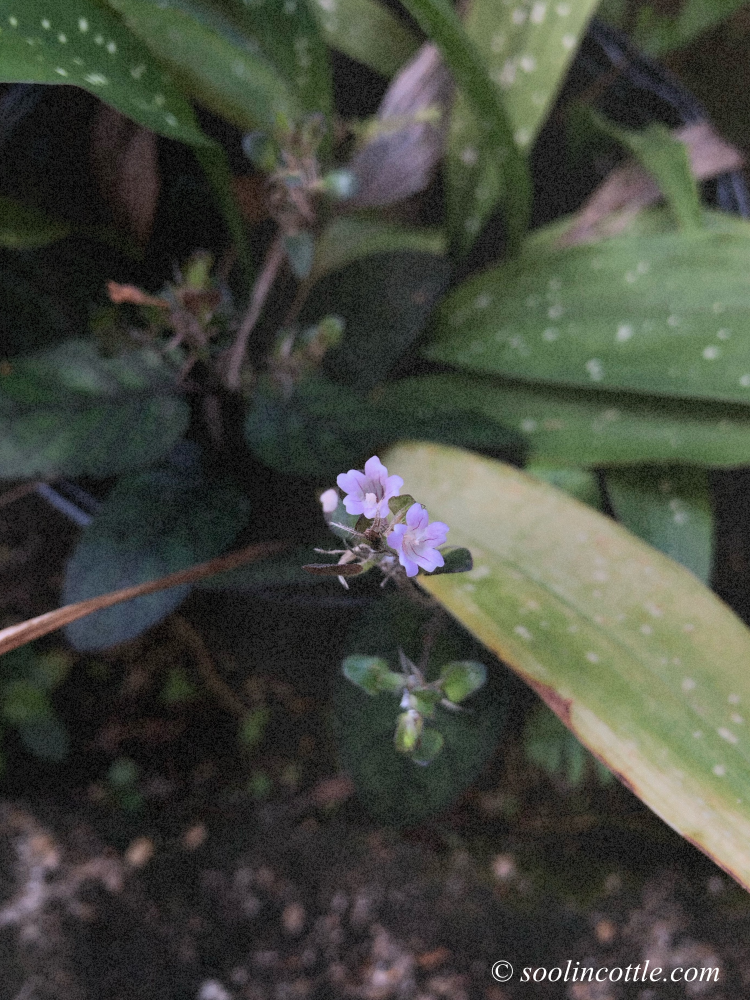
More tiny stars.
Flowers I’ve been able to identify…
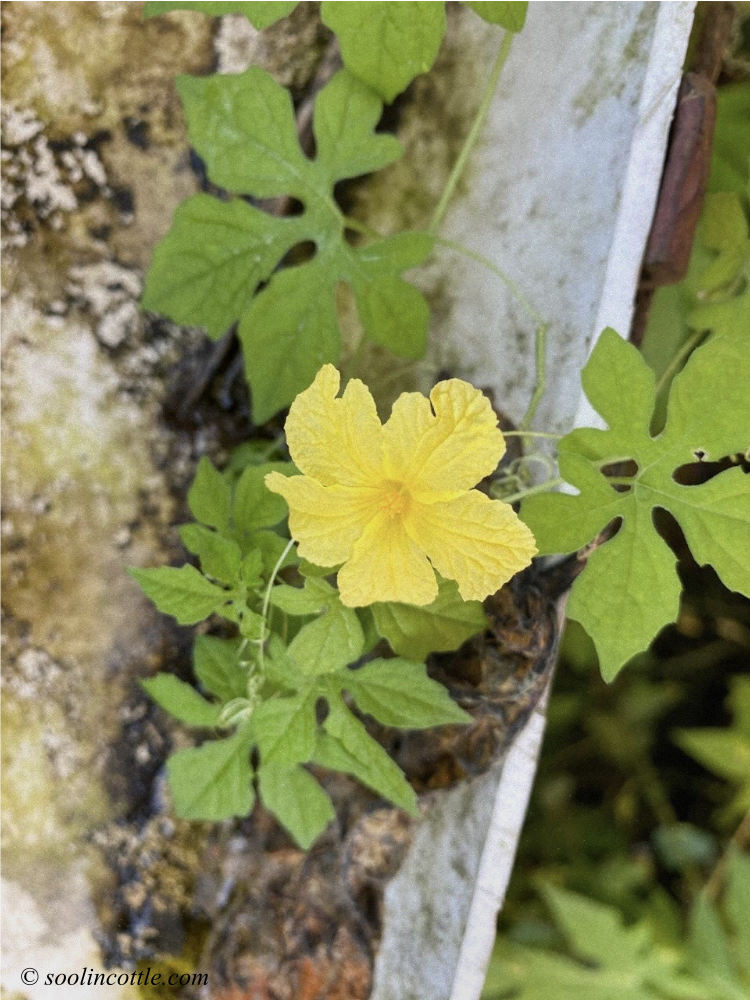
Wild Bitter Melon
Momordica charantia
Wild bitter melon (also known as bitter gourd) is a vine that seems to grow very quickly. The flowers are a striking lemon yellow. The fruits turn from green to orange as they ripen and they’re much smaller than the fruit from the cultivated variety.
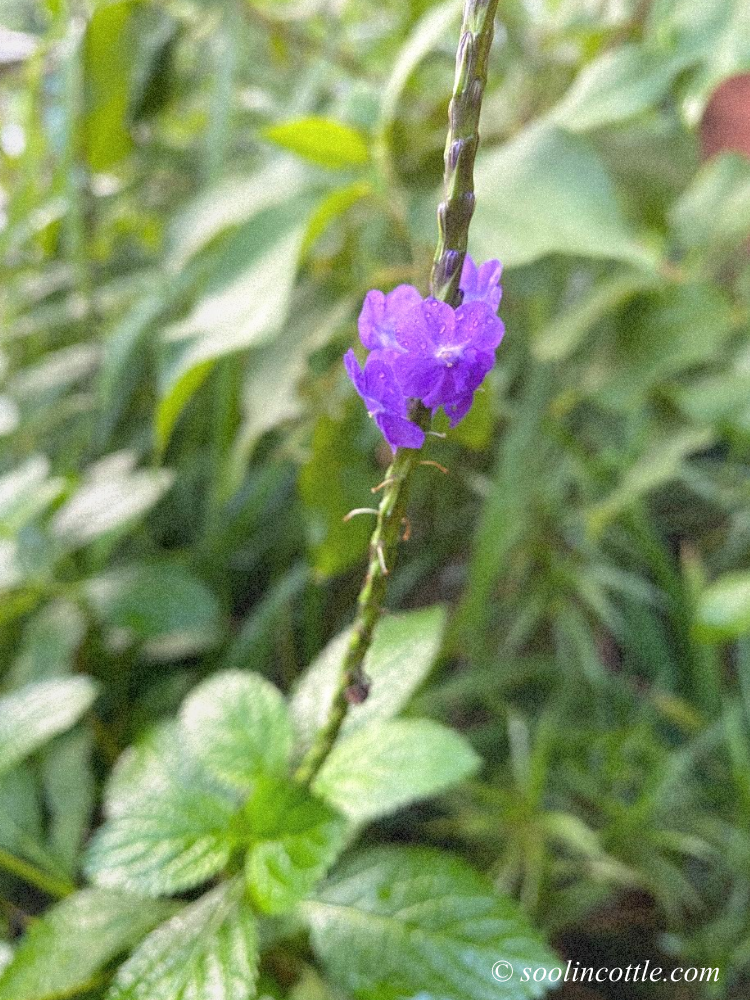
Blue Porterweed
Stachytarpheta jamaicensis
Blue porterweed is a member of the Verbenaceae family. It has several uses in herbal medicine and studies suggest that it may have antimicrobial, anti-inflammatory and antioxidant properties.[1] The pretty flowers attract hummingbirds and butterflies. The hummingbirds seem to like visiting first thing in the morning and at dusk, which is a magical sight to behold.
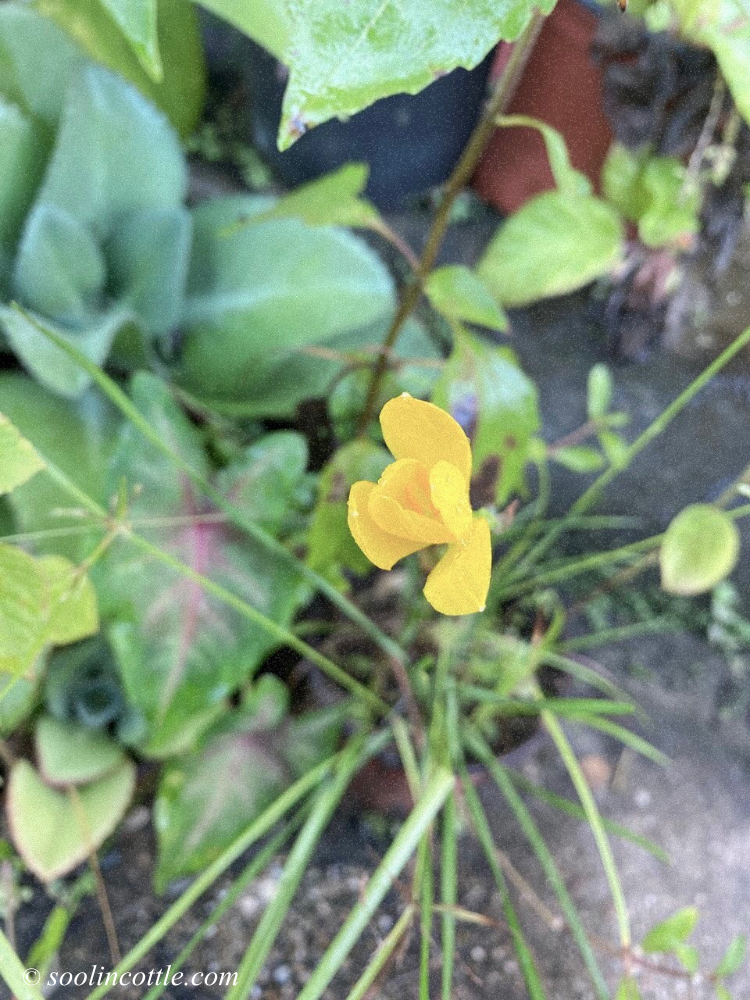
RAIN LILY
Zephyranthes citrina
This beautiful flower is a rain lily. Something about it reminds me of crocuses that push their way up through the grass to produce a burst of colour in spring.
As their name suggests, rain lilies appear after it rains, often carpeting the ground in a sea of white, yellow and/or pink blooms. This one appeared, seemingly miraculously, in a pot after a night of rain.
Rain lilies belong to the Amaryllidaceae family,[2] and plants in this family produce alkaloids that are biologically active compounds. Research to investigate their potential use in medicine is ongoing.[3]
Edited 13/01/25
All photographs were taken by me.
References
1. Liew PM, Yong YK. Stachytarpheta jamaicensis (L.) Vahl: From Traditional Usage to Pharmacological Evidence. Evid Based Complement Alternat Med. 2016;2016:7842340. doi:10.1155/2016/7842340. CC BY
2. Rehman MHU, Saleem U, Ahmad B, Rashid M. Phytochemical and toxicological evaluation of Zephyranthes citrina. Front Pharmacol. 2022;13:1007310. doi:10.3389/fphar.2022.1007310 CC BY
3. Liyanage NS, Awwad F, Gonçalves Dos Santos KC, Jayawardena TU, Mérindol N, Desgagné-Penix I. Navigating Amaryllidaceae alkaloids: bridging gaps and charting biosynthetic territories. J Exp Bot. 2025;76(1):16-34. doi:10.1093/jxb/erae187 CC BY
Disclaimer: The information in this post is for educational and informational purposes only. It is not intended as a substitute for professional medical advice and does not create a doctor-patient relationship. Please consult your doctor or other qualified healthcare professional if you have any medical concerns or questions, before making any decisions about your healthcare or for guidance about any medical condition. If you believe that you are having a medical emergency please call the hospital or emergency services. Do not disregard or delay seeking professional medical advice because of something you read on this website. Your use of information on this website is solely at your own risk.*
